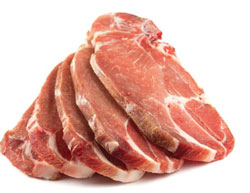Pork companies want changes in pig housing, handling
Two of the nation’s largest pork companies are asking that suppliers make changes intended to improve pig welfare.
Tyson Fresh Meats and Smithfield Foods made those requests in January.

Tyson said in a Jan. 8 letter to contract farms that the company will increase audits of supplier farms and urge farm owners to implement video monitoring, eliminate use of manual blunt-force trauma for euthanasia of piglets, use pain mitigation for tail docking and castration, and ensure that any new housing for pregnant sows provides room for the sows to stand, turn around, lie down, and stretch their legs.
“We’re trying to balance the expectations of consumers with the realities of today’s hog farming business,” the letter states. “The pork industry has a history of being responsive to changing market dynamics and we look forward to working with you on our current challenges.”
Smithfield Foods announced Jan. 7 that the company was asking that suppliers stop using gestation stalls, a type of individual housing for pregnant sows, by 2022. Smithfield plans to stop using the stalls in the company’s own U.S. farms by 2017 and in international operations by 2022.
Smithfield indicated the change is not mandatory, but the company is less likely to extend contracts with those that choose not to participate. As President and CEO of Smithfield Foods, C. Larry Pope acknowledged in the announcement that the change will require substantial investment.
“But a well-planned renovation to a group housing system will help maintain the farms’ value for years to come, while at the same time supporting our companywide commitment to animal care,” he said in the announcement.
Gestation stalls, also known as gestation crates, are typically about 2 feet by 7 feet and are used as individual housing for pregnant sows. Tyson’s letter does not ask that suppliers eliminate use of gestation stalls, but any new gestation stalls would need to be larger than typical to meet the criteria described in the company’s letter.
Advocacy organizations, such as the Humane Society of the United States, have campaigned against use of gestation stalls because of the restrictions they place on sows’ movement. Information from the HSUS indicates that, since the start of 2012, about 60 companies involved in pork production or sales committed to eliminate use of gestation stalls in their supply chains.
Dr. Tom Burkgren, executive director of the American Association of Swine Veterinarians, said he considers January’s announcements to be market-based decisions that will not affect veterinarians’ roles on farms. But he expressed concern that the cost of implementing some of the changes requested by Tyson and Smithfield could cause the most difficulty for small and mid-size pig producers.
Dr. Burkgren also said employee training and supervision are more important than video monitoring. And while the AASV has advocated for use of pain mitigation, that currently requires extralabel drug use because of the absence of drugs approved for mitigating pain in pigs.
Related JAVMA content:
Flood of pork buyers want sow housing changes (Nov. 1, 2012)